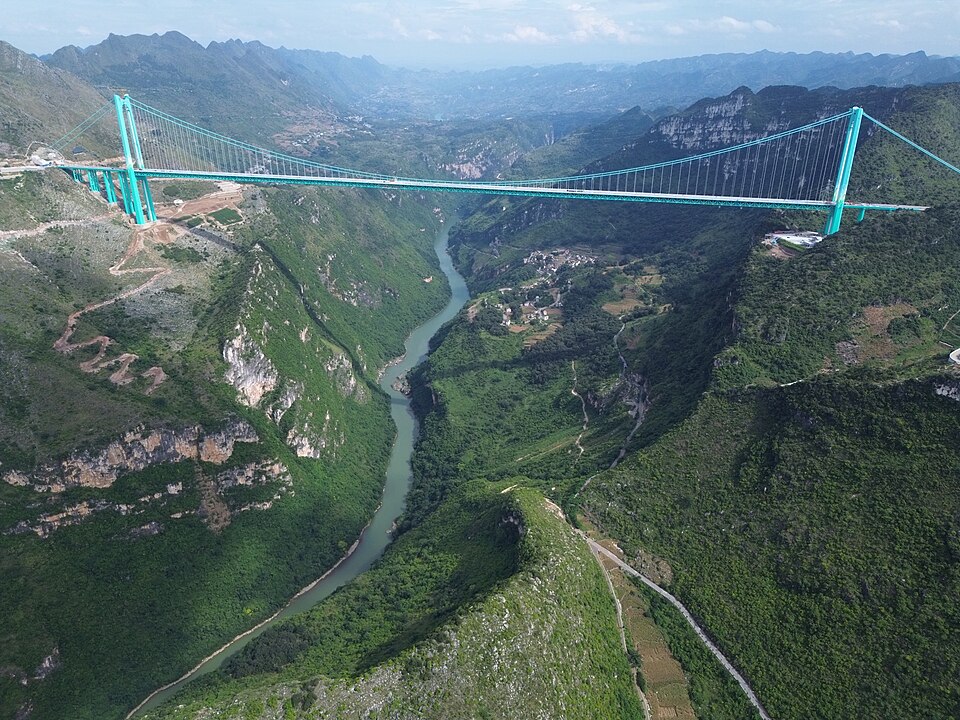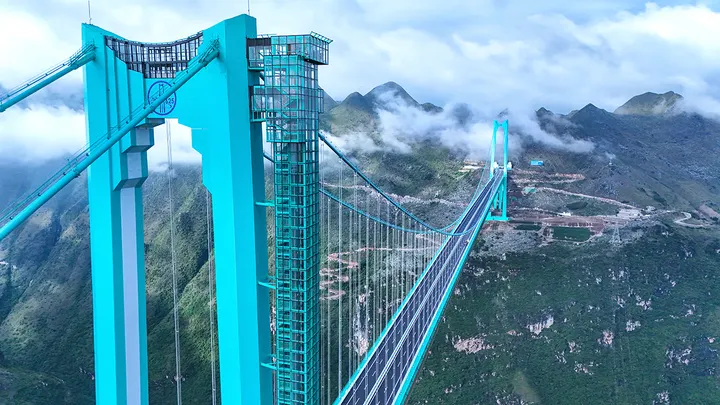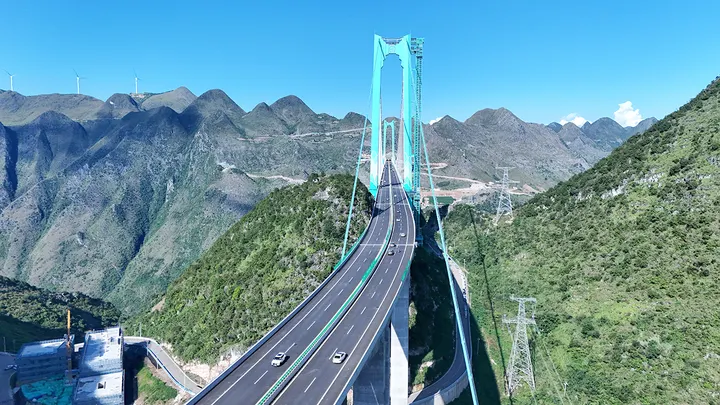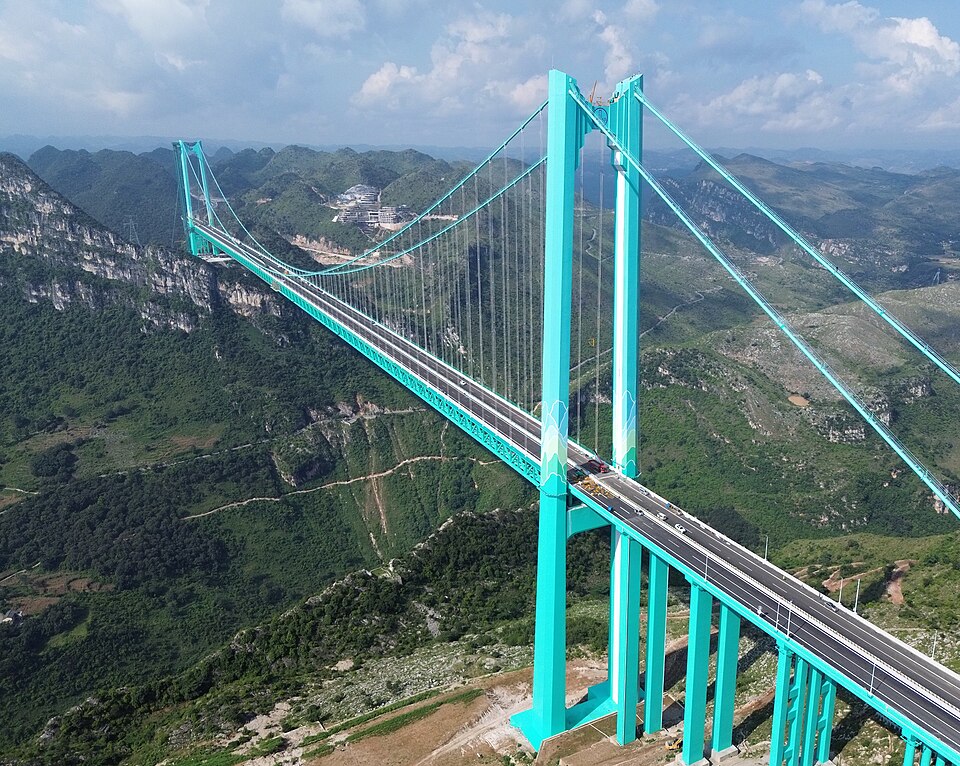Engineering Marvel Unveiled: The World’s Highest Bridge Opens in Guizhou, China
Suspended 625 metres above the Beipan River gorge in Guizhou Province, the Huajiang Grand Canyon Bridge redefines the limits of structural design and human ingenuity. This extraordinary infrastructure project not only breaks world records but also transforms a remote region into a global engineering landmark.
A Landmark in Chinese Infrastructure and Bridge Engineering
Before delving into the design and construction details, it’s essential to understand the context of this record-breaking bridge. The opening of the world’s highest bridge in China’s Guizhou Province symbolises how engineering excellence can accelerate regional growth and connectivity.
China has officially opened what is now recognised as the world’s highest bridge, the Huajiang Grand Canyon Bridge, which towers 625 metres above the Beipan River in southwest China. With its record-breaking height and length, it surpasses the Beipanjiang Bridge (565 m), previously the highest. It forms part of the 152 km Liuzhi–Anlong Expressway, a key corridor in western China’s infrastructure network.
Stretching 2,890 metres in total with a main span of 1,420 metres, this colossal structure epitomises the sophistication of modern bridge engineering. Built by China Railway Hi-Tech Industry under the China Railway Engineering Group and designed by Guizhou Bridge Group, it marks another milestone in the nation’s ongoing infrastructure projects, which continue to push global engineering boundaries.

Technical Design Profile of the Huajiang Grand Canyon Bridge
To understand why the Huajiang Grand Canyon Bridge stands out among the world’s tallest bridges, one must examine the intricate technical and material specifications that make it structurally resilient, safe, and sustainable.
Geometry and Basic Specifications
- Total length: ≈ 2,890 m (including approaches).
- Main suspension span: 1,420 m.
- Deck clearance: 625 m above the Beipan River.
- Tower heights: North ≈ 262 m; South ≈ 205 m.
- Width: ≈ 30 m (four traffic lanes plus pedestrian/tourist access).
Materials and Load-Bearing Systems
The bridge utilises C60-grade reinforced concrete for its towers and high-strength, corrosion-resistant steel (with a tensile strength of up to 2,000 MPa) for its main cables. Its 22,000-tonne orthotropic steel deck, three times the mass of the Eiffel Tower, provides an optimal strength-to-weight ratio. Weathering steel, fire-resistant coatings (rated to 1,100°C), and fibre-optic monitoring sensors ensure long-term durability under severe environmental exposure.
Load and Design Criteria
- Design live load: ≈ 14 kN/m² per lane.
- Wind resistance: Designed for gusts up to 200 km/h.
- Seismic performance: Tolerates horizontal acceleration of 0.35 g using dampers and isolation bearings.
- Deflection limit: Lateral displacement < 1/200 of span under service loads.
- Structural health monitoring: 200+ sensors tracking strain, temperature, and vibration in real time.
This data-driven design approach underlines how China’s record-breaking bridge height and design principles are guided by precision and redundancy, ensuring both safety and longevity.
Construction and Engineering Challenges
Constructing the world’s highest bridge over the Beipan River presented unique geotechnical and environmental challenges. Here’s how engineers overcame nature’s most formidable obstacles.

1. Geological and Terrain Factors
Guizhou’s rugged karst landscape required advanced foundation engineering. The limestone cliffs and fractured geology required that pile foundations be drilled over 90 metres into bedrock to achieve a safety factor greater than 1.8. Engineers also implemented grouted rock anchors to stabilise the slopes surrounding the bridge towers.
2. Construction Methodology
The Chinese constructors and engineers devised ingenious methodologies to tackle the mega construction project of the world’s highest bridge. They ensure that all precision is achieved using all available bridge-building technology and construction techniques.
- Tower alignment: Laser and GPS systems maintained vertical precision within ± 10 mm.
- Cable installation: Drone-guided pilot lines preceded aerial cable-crane placement of main cables.
- Deck assembly: Prefabricated 93-unit steel truss segments were incrementally launched using a balanced-cantilever method.
- Wind control: Real-time solar-powered anemometers halted work above 12 m/s gust speeds.
3. Safety and Environmental Controls
Working 625 metres above ground demanded innovative fall-arrest systems, dynamic work platforms, and full-time meteorological monitoring. Access logistics were planned to minimise ecological disruption, aligning with sustainable China infrastructure projects in mountainous terrain.
Connectivity, Regional Impact, and Tourism
Beyond its engineering triumph, the bridge in Guizhou Province symbolises development and integration. This colossal structure has cut travel time across the canyon from two hours to just two minutes, enhancing accessibility for millions.
The bridge connects rural highlands to new economic hubs, driving investment in infrastructure milestones in Guizhou Province. It also integrates tourism with engineering excellence; visitors can bungee jump, take a glass lift to a panoramic interstellar café perched 800 metres above the canyon, or cross a transparent walkway suspended nearly 600 metres above the ground.

Guizhou now leads the nation in bridge density, with over 32,000 bridges completed or under construction, a significant rise from the 2,900 bridges in the 1980s. The Huajiang Grand Canyon Bridge thus cements Guizhou’s status as a world centre of structural innovation.
Records, Rankings, and Global Engineering Significance
This bridge not only redefines the world’s highest bridges but also demonstrates how precision engineering and rapid construction can coexist. Completed in under four years, half the standard duration for such mega-projects, it showcases China’s capacity for accelerated infrastructure delivery.
By holding the top position among global bridge deck heights, the Huajiang Bridge underscores China’s dominance in record-breaking bridges. Eight of the ten tallest bridges now stand on Chinese soil, a testament to the nation’s commitment to pioneering infrastructure and advanced construction technologies.
Innovations and Engineering Lessons in Bridge Construction
To appreciate how China built the world’s highest bridge, one must examine the technological advancements that set new standards for modern suspension structures.

- Aerodynamic deck profiling reduced wind oscillations by 45%, enhancing stability.
- Digital twin technology provides real-time stress modelling, predicting long-term fatigue and corrosion trends.
- Modular prefabrication in bridges improved precision while reducing on-site labour by 30%.
- Smart maintenance systems extend the bridge’s design life beyond 120 years.
Each innovation demonstrates how the world’s tallest bridges and engineering innovations continue to evolve through data, AI monitoring, and materials science, core pillars of China’s infrastructure revolution.
Conclusion: A New Blueprint for Bridge Engineering
The Huajiang Grand Canyon Bridge is not merely the world’s highest bridge; it represents a paradigm shift in civil engineering design, safety, and sustainability. It combines record-setting height with groundbreaking construction precision, bridging not just physical distances but economic and cultural divides.
For engineers and policymakers alike, this is more than a Chinese success story. It’s a case study in how vision, science, and technology can converge to redefine the possible. As the Beipan River bridge gleams across Guizhou’s skies, it stands as an enduring symbol of innovation, resilience, and human ambition.
Building the Future: Explore More With Us
Stay ahead of the curve with ConstructionFrontier.com, where we explore the technologies, materials, and strategies behind record-breaking bridges and China’s infrastructure projects shaping tomorrow’s world. Dive deeper into technical case studies and expert insights that define the future of engineering.





